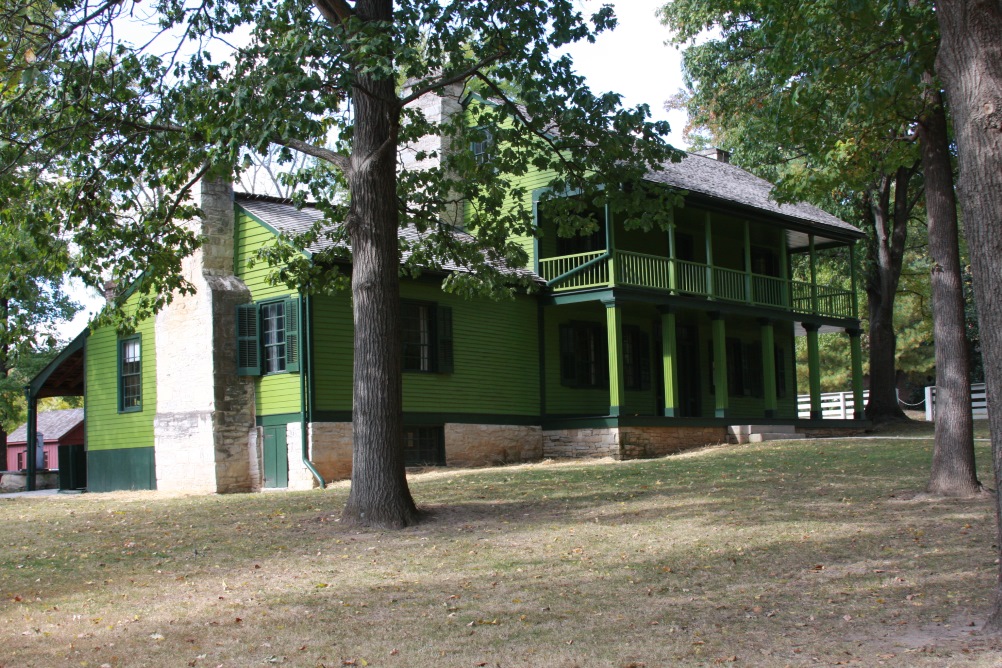October 12, 2022 @ 14:25 CST
Site Visit #63
The term “being in the right place at the right time” was perhaps never truer than it was for Ulysses S. Grant. The National Historic Site that bears his name holds the house where he and his wife lived for much of their married life. But let’s look at how he got to this point, and what I meant in that opening line.
Grant was born in Ohio, not far from where I used to live, and was named Hiram Ulysses Grant. He was “renamed” by an administrative error when he attended the Military Academy at West Point, which entered his name as “U. S. Grant”. If the government says that is your name, it is!
While at West Point, he became close friends with Frederick Dent and James Longstreet. Some twenty years later, he would be leading an army against Longstreet, who was a top general in the Confederate army.
His friendship with Dent, however, led to a different path. Dent was from Missouri and after graduation, Grant was assigned to a post near Dent’s home. He visited the Dent home, where he met Dent’s sister – who ultimately became his wife!
The Dents were slaveholders while Grant was raised in an abolitionist home. This made for a rather tense relationship with the in-laws, though it was generally resolved by simply not discussing the issue.
Grant distinguished himself during the Mexican War, but personally found the war an unjust fight of a stronger nation over a weaker one for simple territorial gains. His post-war Army career ultimately took him to California, far from his family. In 1854, he resigned from the army and returned to St. Louis to live in the Dent home (which is the one I was visiting).

For the next several years, Grant tried – and mostly failed – at several different occupations including farming and real estate. He lived on the edge (or even well into) poverty for much of this time. In 1857, in a move many would find surprising, he acquired one slave, William Jones, from his father-in-law. He found that he was a poor slave master and ultimately freed Jones.
He finally accepted work with his father, now living in Illinois. Then, that “right time” moment happened. Fort Sumter was attacked and the U. S. Civil War had started. Grant decided to return to the military but found his request to be recommissioned declined by General George McClellan. Fortunately, his local Congressman help him secure a position in the Illinois militia, where Grant raised and led ten regiments.
Officer rank was often political in these times, and he was quickly made Colonel and shortly after, General of Illinois volunteers. To shorten the story, Grant excelled in the western theater of the war, ultimately getting the attention of Lincoln, who brought him east to lead the Army of the Potomac. Where several Generals (including McClellan) had failed, Grant succeeded, ultimately driving the Confederates to Appomattox and surrender.
Grant parlayed his battlefield success into two terms as President. I knew very little of his time as President and was amazed to learn that he seemed to pursue the course Lincoln wanted for reconstruction after the war. He used federal troops to enforce the new constitutional amendments ending slavery and ensuring voting rights – something that would be repeated nearly 100 years later during the civil rights movement of the 1960s.
Following his two terms, private citizen Grant again fell on hard times financially. There was no government pension for ex-presidents, and he made a few bad investments. The worst came when he invested in a brokerage house with a man who turned out to be a con man. Grant lost most of his money. To add to his misfortune, he was diagnosed with terminal cancer.
Desperate to find a way to support his wife after his death, he considered writing a memoir. His Missouri friend Mark Twain was able to negotiate an unprecedented royalty rate for those memoirs. He completed them a mere five days before he succumbed to his cancer. The memoirs are still in publication to this day, and provided his wife the 2021 equivalent of $13 million!
From all I have written here, it is probably obvious that I learned a great deal in a short time visiting this site. The site itself has a small Visitor Center where a video covers much of Grant’s life. Tours of the house leave periodically, though they aren’t really “in-depth” tours. Rather, a ranger leads the group from the Visitor Center up a walkway to the house, stopping often to present more historical information. At the house, we are pretty much just given free rein to wander while the ranger remains nearby to answer any questions.
Though the house was nice to visit, the highlight of this site was the historical information about Grant. One wonders about how his life might have played out had the Civil War not happened. Almost certainly, he would be a historical unknown probably having lived a life of near poverty. As I said at the top, he was in the right place and right time – for him and the nation.
Steve